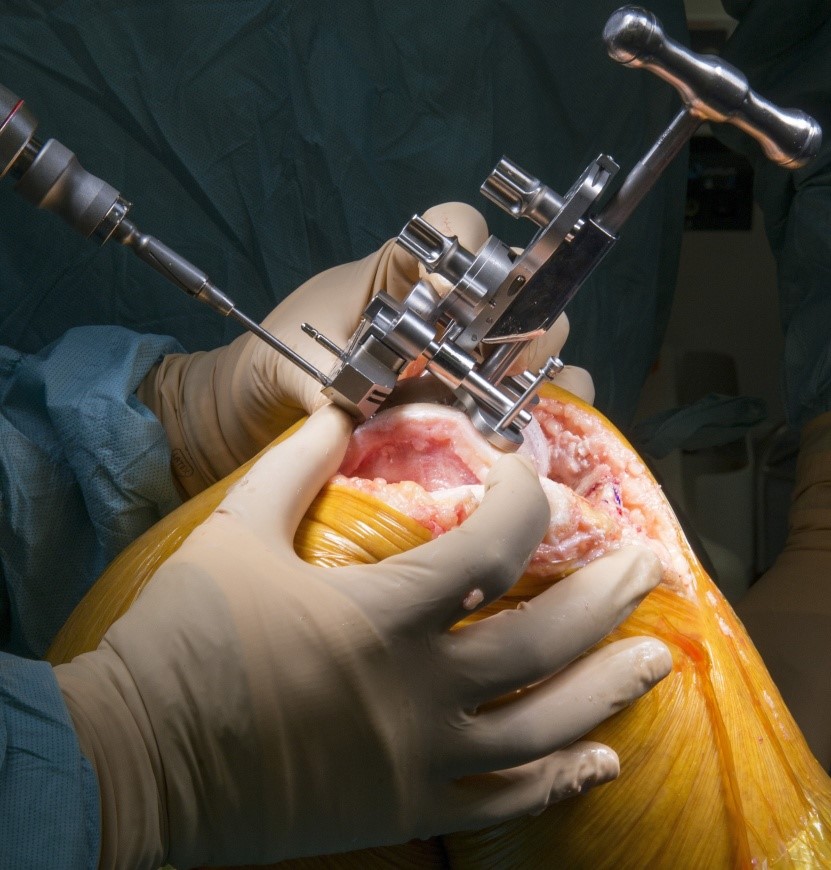Total Knee Replacement (TKR), also known as total knee arthroplasty (TKA), stands as one of the most remarkable achievements in modern medicine, revolutionizing the lives of countless individuals suffering from debilitating knee conditions. The history of total knee replacement is a journey through decades of innovation, surgical mastery, and persistent dedication to enhancing patients’ quality of life.
Early Endeavors and Conceptualization (19th to Early 20th Century)
The inception of total knee replacement can be traced back to the late 19th century when surgeons began to experiment with joint replacement procedures. However, it wasn’t until the early 20th century that the concept of total knee replacement started to take shape. One of the earliest documented efforts was by Themistocles Gluck in 1891, who proposed the idea of using ivory to replace a knee joint. This concept laid the foundation for future developments in knee replacement surgery.
Hinged Implants and Early Innovations (1950s – 1970s)
The mid-20th century witnessed significant advancements in orthopedic surgery, encouraging the development of hinged knee implants. In the 1950s, Dr. Leslie Gordon Percival Shiers successfully implanted a hinged knee joint, effectively treating severe arthritis. This marked a turning point, as surgeons began to explore alternatives to total knee fusion.
In the 1970s, the era of modern total knee replacement truly began. Dr. John Insall, along with his colleagues, developed the Insall-Burstein knee prosthesis, which aimed to reproduce natural knee kinematics. This design laid the groundwork for future innovations in implant design, implant fixation techniques, and surgical approaches.
Advancements in Implant Design and Surgical Techniques (1980s – 1990s)
The 1980s and 1990s brought remarkable progress in total knee replacement. Implant materials evolved, with surgeons experimenting with various combinations of metals and plastics to enhance durability and minimize wear. This period also saw the rise of minimally invasive surgical techniques, which aimed to reduce trauma, blood loss, and recovery time for patients.
Computer-Assisted Surgery and Personalized Implants (2000s – Present)
The turn of the millennium marked a shift toward computer-assisted surgeries and personalized implants. Computer navigation systems were introduced, enabling surgeons to achieve higher levels of accuracy in implant placement. Patient-specific implants, utilizing advanced imaging and 3D printing technologies, gained prominence, allowing for a more tailored approach to each patient’s anatomy.
Current Trends and Future Prospects
Total knee replacement continues to evolve. Researchers are exploring innovative materials, such as bioactive coatings and advanced polymers, to enhance implant longevity. Robotic-assisted surgeries have emerged, offering even greater precision and potentially improved outcomes.
Furthermore, the focus has extended beyond the surgical procedure itself to post-operative rehabilitation and patient education. Multidisciplinary approaches now involve physical therapists, pain management specialists, and psychologists, ensuring patients recover not only physically but also mentally.
In conclusion, the history of total knee replacement mirrors the remarkable progress of medical science and technology. From early conceptualizations to today’s state-of-the-art procedures, the journey has been marked by innovative ideas, persistent experimentation, and a commitment to enhancing patients’ lives. As we move forward, it’s likely that total knee replacement will continue to push the boundaries of what’s possible, providing renewed hope and mobility to individuals around the world.
References
- Ranawat, History of total knee replacement. J South Orthop Assoc. 2002 Winter;11(4):218-26. PMID: 12597066.
- Gunston, FH. Polycentric knee arthroplasty. Prosthetic simulation of normal knee movement: interim report.Clin Orthop Relat Res, 1973(94): p. 128-35.

This article was written by Elisa Bissacco as part of an ongoing series of scientific communications written and curated by BioTrib’s Early Stage Researchers.
She is studying a PhD in Tribological Characteristics of Nanofibrous Electrospun Materials at ETH Zurich.

